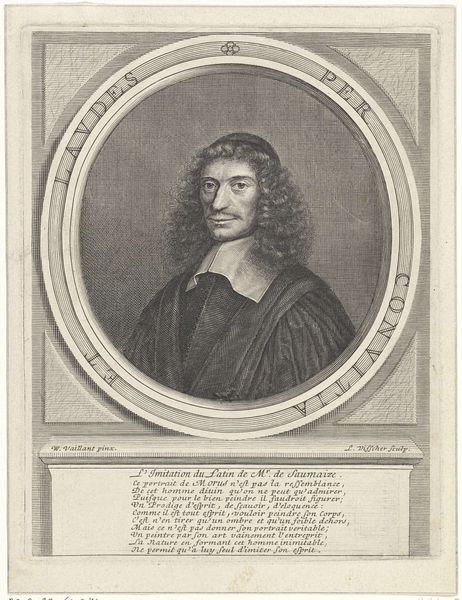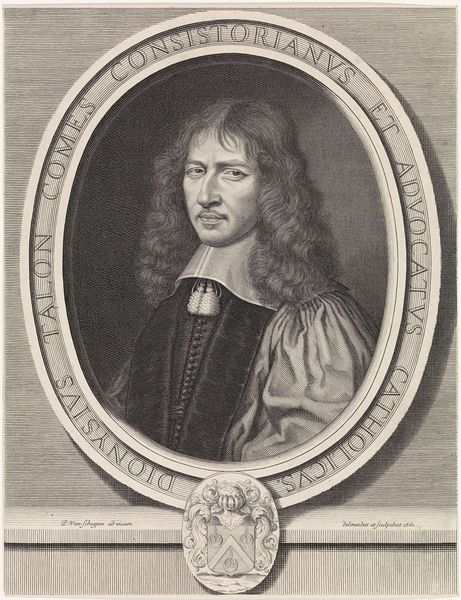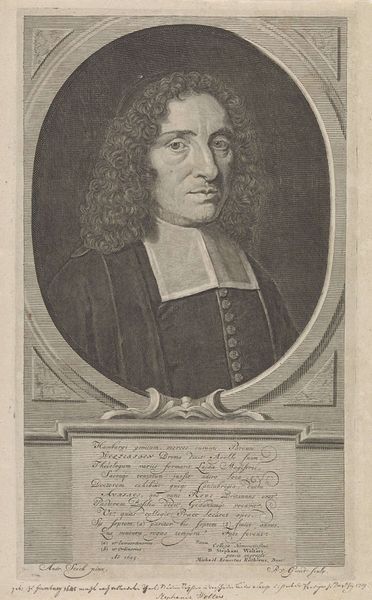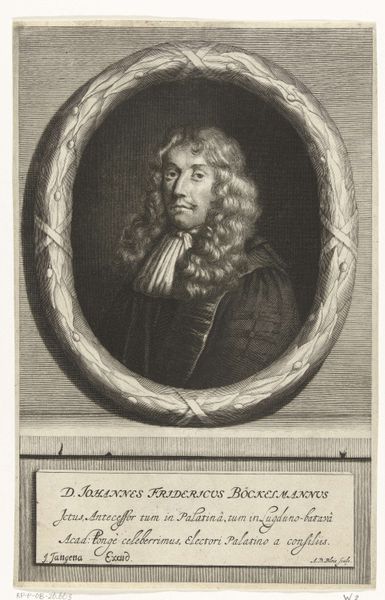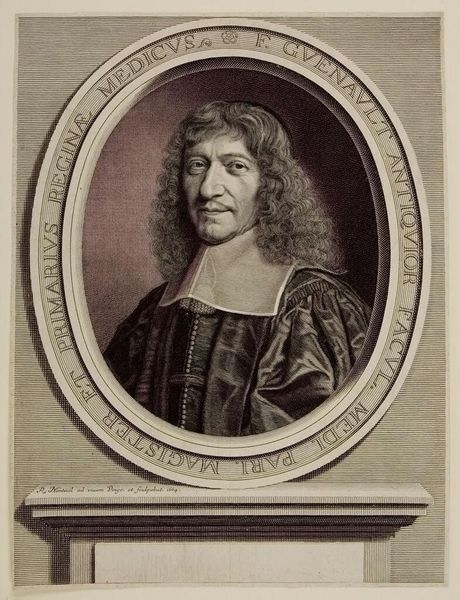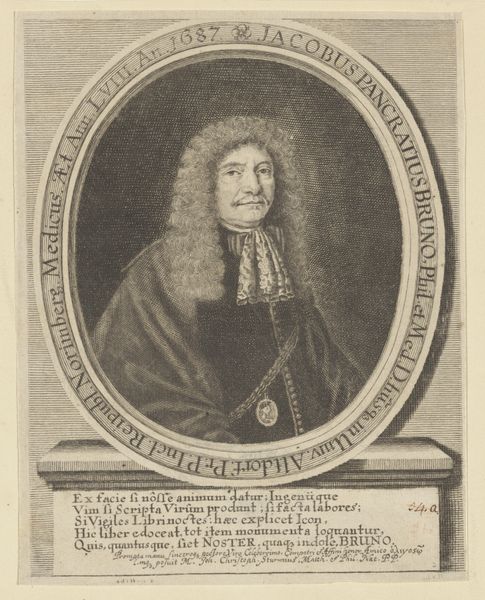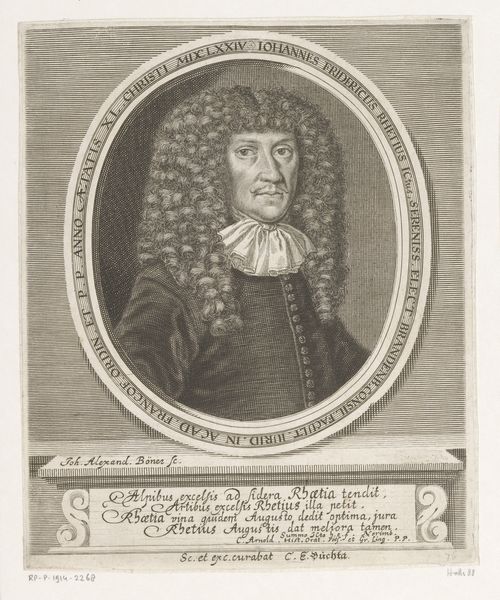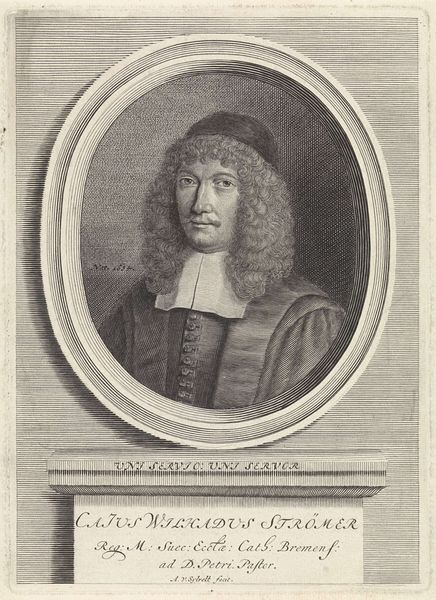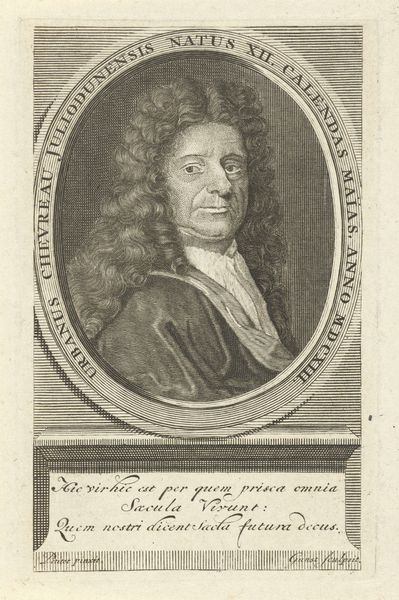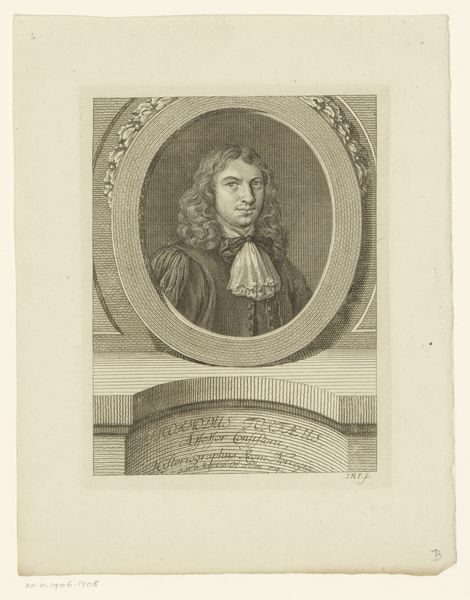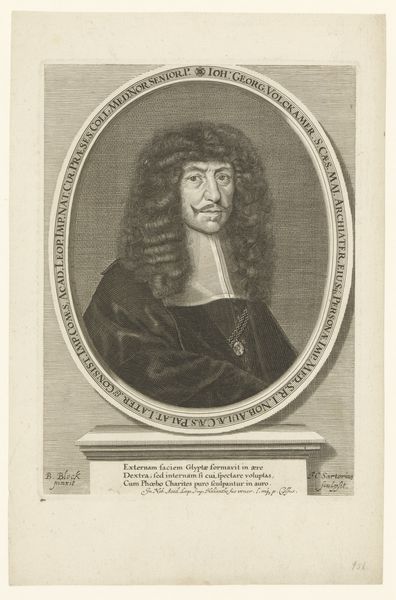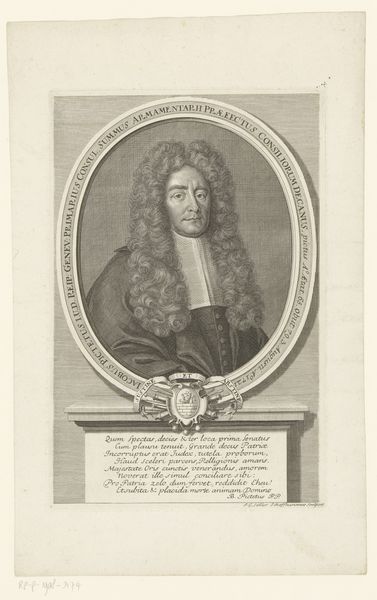
print, etching, paper, engraving
#
portrait
#
baroque
# print
#
etching
#
old engraving style
#
paper
#
engraving
Dimensions: height 150 mm, width 98 mm
Copyright: Rijks Museum: Open Domain
Curator: This is Bernard Picart's 1709 engraving, "Portret van François Eudes de Mézeray," rendered in the baroque style using etching on paper. The subject, a historian, is presented within an oval frame, surrounded by text. What strikes you about this piece? Editor: It’s a very formal portrait, isn’t it? There’s an inscription below and around the image. It looks quite serious and stately, like a record of an important figure. What does this image suggest to you? Curator: Considering Mézeray's role as a historian, the image engages in a complex dialogue about power, representation, and historical narrative. In the 18th century, engravings like this circulated widely. How do you think the representation of Mézeray through this medium affected his legacy and the reception of his historical work? Was it a way of solidifying a particular historical perspective or perhaps challenging it? Editor: So you’re suggesting the very act of creating and circulating his image also communicated something about him and history itself? Almost like propaganda, or perhaps simply legacy building? Curator: Precisely. Think about how visual representations contributed to the construction of historical memory and consider who controlled these narratives. Did images of scholars like this one, reinforce or subvert existing power structures of the time? Editor: I see your point. The image becomes a statement. It raises questions about who is being memorialized and how those stories are being shaped and spread. It seems essential to remember, and question, the power dynamics involved in image making at that time. Thanks, I hadn’t thought about it that way before. Curator: That's exactly it. We need to consider images like this not just as records but also as active participants in shaping history and the perception of individuals.
Comments
No comments
Be the first to comment and join the conversation on the ultimate creative platform.
